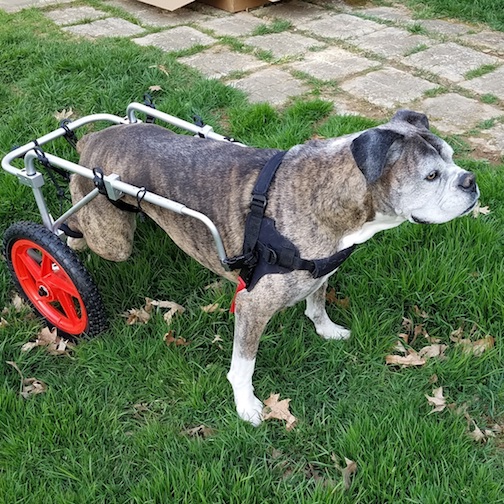From Rusty Rigs to Rolling Freedom: A History of Dog WheelchairsFrom Rusty Rigs to Rolling Freedom: A History of Dog Wheelchairs
Imagine a world where a dog’s mobility loss doesn’t automatically mean a loss of joy and independence. This world exists today thanks to the incredible innovation of dog wheelchairs. But how did these life-changing devices come into existence? Let’s explore the history of dog wheelchairs, from their humble beginnings to the modern marvels they are today.
The Early Days: A Veterinarian’s Ingenuity (1960s)
The story starts in the 1960s with Dr. Lincoln Parkes, a veterinarian in New York City. Witnessing the heartbreaking reality of dogs facing euthanasia due to mobility issues, Dr. Parkes was determined to find a solution. Inspired by human wheelchairs, he fashioned a crude device from metal bars and wheels for a Dachshund patient. The dog, thrilled to be mobile again, became the first recipient of what would be known as K-9 Carts.
This invention wasn’t just a medical breakthrough but a paradigm shift. Dr. Parkes’ innovation sparked a movement, proving that dogs with disabilities could enjoy a fulfilling life. His design, though essential, paved the way for further development.
Evolution on Wheels: From Basic to Bespoke (1970s-1990s)
The 1970s and 1980s saw advancements in materials and design. K-9 Carts expanded its offerings, and other companies entered the market. Wheelchairs became lighter, more adjustable, and better suited to different breeds and sizes. Concepts like rear-wheel drive and harnesses for stability emerged, improving comfort and maneuverability.
However, these early wheelchairs were still essentially custom-made, with limited availability and high costs. This meant many dogs with mobility issues remained without this essential tool.
The Dawn of Accessibility: Innovation and Affordability (2000s-Present)
The 21st century marked a turning point. Companies like Walkin’ Wheels, established in 2001, focused on mass production and affordability, making wheelchairs accessible to a broader range of pet owners. New materials like aluminum and mesh fabric offered lightweight comfort while designs became more ergonomic and adaptable.
Technological advancements also played a role. 3D printing allowed for personalized wheelchair components, catering to specific needs. Additionally, the rise of online retailers and communities increased awareness and access to these life-changing devices.
Beyond Mobility: A Focus on Quality of Life
Today, dog wheelchairs are no longer just about locomotion; they’re about enhancing the overall quality of life for dogs with mobility challenges. Features like padded harnesses, ramps, and custom-designed tires cater to individual needs and preferences.
The stigma surrounding dog wheelchairs has also dissipated. These devices are now seen as tools for empowerment, allowing dogs to participate in activities they love, interact with their environment, and maintain their independence.
Looking Ahead: A Future of Innovation and Inclusion
The future of dog wheelchairs is bright. Research and development continue to focus on personalized designs, advanced materials, and even integration with assistive technologies. The goal is to create wheelchairs that are functional and seamlessly integrated into a dog’s life, allowing them to move freely and confidently.
The story of dog wheelchairs is one of compassion, ingenuity, and continuous improvement. From Dr. Parkes’ first rusty rig to the high-tech devices of today, these mobility aids have transformed the lives of countless dogs, granting them the freedom and joy they deserve. As technology and understanding evolve, we can expect even more advancements in the future, ensuring that every dog, regardless of its limitations, can experience the world with boundless enthusiasm.
